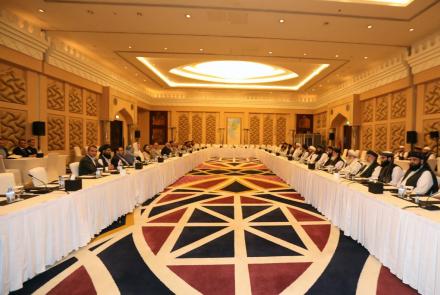The Afghan government and the Afghan Taliban announced on the 2nd respectively that the two sides agreed on the steps of future intra-Afghan peace negotiations, and that the next step will be to start dialogue according to the timetable.
Nader Nadri, one of the Afghan government negotiators, and Mohammed Nayim, spokesman of the Taliban, announced the news on social media respectively. Abdullah Abdullah, chairman of the High Commission for National Reconciliation in Afghanistan, said on social media that this is an “important first step”.
Several media reported that this was the first time that the two sides had reached a written document, a total of three pages, which set out the rules and steps for negotiations on the political road map and a comprehensive ceasefire.
Deborah Lyons, the Special Representative of the Secretary-General of the United Nations for Afghanistan, said on social media late on the 2nd that he welcomed this “positive development” and that “this breakthrough should be a springboard to achieve the peace that all Afghans expect”.
The United States also welcomed it, saying that it showed that the two sides were “able to reach agreement on difficult issues”.
The Afghan government and the Taliban began peace talks in Doha, the capital of Qatar, on September 12, but progress was slow due to many differences.
Several media reported that the two sides almost reached an agreement in November, but the last minute collapsed due to a dispute over the wording in the document. In addition, during the peace talks between the two sides, attacks in Afghanistan and exchange of fire between security forces and Taliban armed forces continued to occur.
Kabul, the capital of Afghanistan, has been hit by several attacks in recent weeks, killing dozens of people. The extremist organization Islamic State “claimed” several of the attacks, and Afghan government officials accused the Taliban of launching the rest of the attacks, which the Taliban denied.



